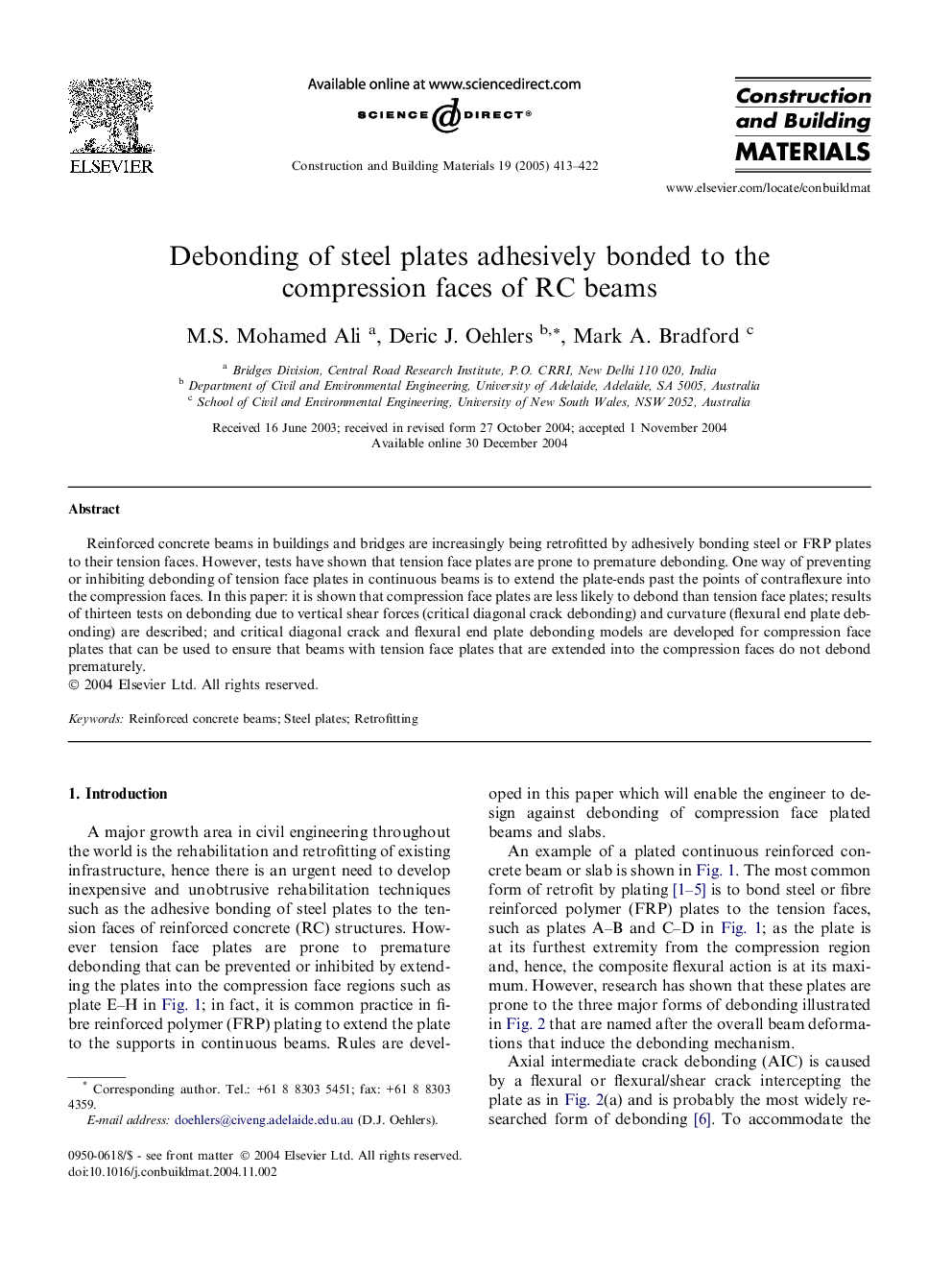| Article ID | Journal | Published Year | Pages | File Type |
|---|---|---|---|---|
| 10285313 | Construction and Building Materials | 2005 | 10 Pages |
Abstract
Reinforced concrete beams in buildings and bridges are increasingly being retrofitted by adhesively bonding steel or FRP plates to their tension faces. However, tests have shown that tension face plates are prone to premature debonding. One way of preventing or inhibiting debonding of tension face plates in continuous beams is to extend the plate-ends past the points of contraflexure into the compression faces. In this paper: it is shown that compression face plates are less likely to debond than tension face plates; results of thirteen tests on debonding due to vertical shear forces (critical diagonal crack debonding) and curvature (flexural end plate debonding) are described; and critical diagonal crack and flexural end plate debonding models are developed for compression face plates that can be used to ensure that beams with tension face plates that are extended into the compression faces do not debond prematurely.
Related Topics
Physical Sciences and Engineering
Engineering
Civil and Structural Engineering
Authors
M.S. Mohamed Ali, Deric J. Oehlers, Mark A. Bradford,
